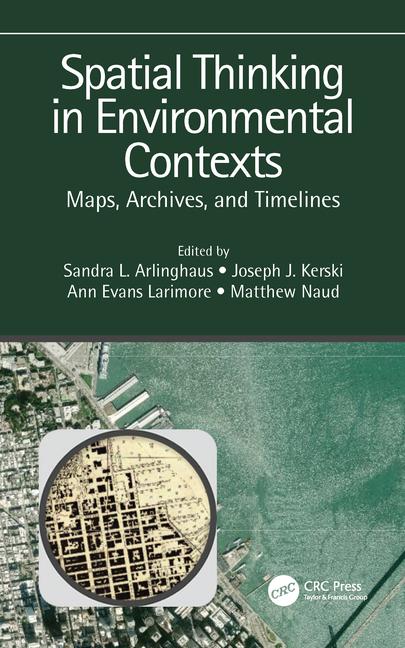- Home
- :
- All Communities
- :
- Industries
- :
- Education
- :
- Education Blog
- :
- Announcing new book: Spatial Thinking in Environm...
Announcing new book: Spatial Thinking in Environmental Contexts: Maps, Archives, and Timelines
- Subscribe to RSS Feed
- Mark as New
- Mark as Read
- Bookmark
- Subscribe
- Printer Friendly Page
- Report Inappropriate Content
I am pleased to announce that a new book that I am co-author and co-editor on has been published by CRC Press, entitled Spatial Thinking in Environmental Contexts--Maps, Archives, and Timelines. My co-authors and I refer to it as "GeoMAT". For a brief video about the book, see this link. Spatial Thinking in Environmental Contexts: Maps, Archives, and Timelines cultivates the spatial thinking "habit of mind" as a critical geographical view of how the world works, including how environmental systems function, and how we can approach and solve environmental problems using maps, archives, and timelines. The work explains why spatial thinking matters as it helps readers to integrate a variety of methods to describe and analyze spatial/temporal events and phenomena in disparate environmental contexts. It weaves together maps, GIS, timelines, and storytelling as important strategies in examining concepts and procedures in analyzing real-world data and relationships. The work thus adds significant value to qualitative and quantitative research in environmental (and related) sciences.

Cover of book Spatial Thinking in Environmental Contexts: Maps, Archives, and Timelines.
The book features:
- Written by internationally renowned experts known for taking complex ideas and finding accessible ways to more broadly understand and communicate them.
- Includes real-world studies explaining the merging of disparate data in a sensible manner, understandable across several disciplines.
- Unique approach to spatial thinking involving animated maps, 3D maps, GEOMATs, and story maps to integrate maps, archives, and timelines—first across a single environmental example and then through varied examples.
- Merges spatial and temporal views on a broad range of environmental issues from traditional environmental topics to more unusual ones involving urban studies, medicine, municipal/governmental application, and citizen-scientist topics.
- Provides easy to follow step-by-step instructions to complete tasks; no prior experience in data processing is needed.
Here are more details: Reference - 224 Pages - 271 B/W Illustrations | ISBN 9781138631854 - CAT# K32082
Who could benefit from this book? Researchers in a wide variety of fields, but all of whom want to understand what spatio-temporal thinking is and how it can be incorporated, instructors who want to teach with the exciting tools and data sets available through the WebGIS paradigm (such as ArcGIS Online, story maps, Operations Dashboards, Survey123, and more), the "curious general public" who are intrigued by mapping tools and want to explore them, and finally, all who are keenly aware of the challenges we face as a 21st Century society and want to take positive steps to raise awareness of them and solve them.
I look forward to hearing your reactions to the book!
--Joseph Kerski
A selection of images from the book.
You must be a registered user to add a comment. If you've already registered, sign in. Otherwise, register and sign in.
-
Administration
49 -
Announcements
59 -
Career & Tech Ed
1 -
Curriculum-Learning Resources
207 -
Education Facilities
24 -
Events
53 -
GeoInquiries
1 -
Higher Education
543 -
Informal Education
272 -
Licensing Best Practices
57 -
National Geographic MapMaker
21 -
Pedagogy and Education Theory
201 -
Schools (K - 12)
282 -
Schools (K-12)
210 -
Spatial data
25 -
STEM
3 -
Students - Higher Education
236 -
Students - K-12 Schools
104 -
Success Stories
29 -
TeacherDesk
1 -
Tech Tips
87
- « Previous
- Next »